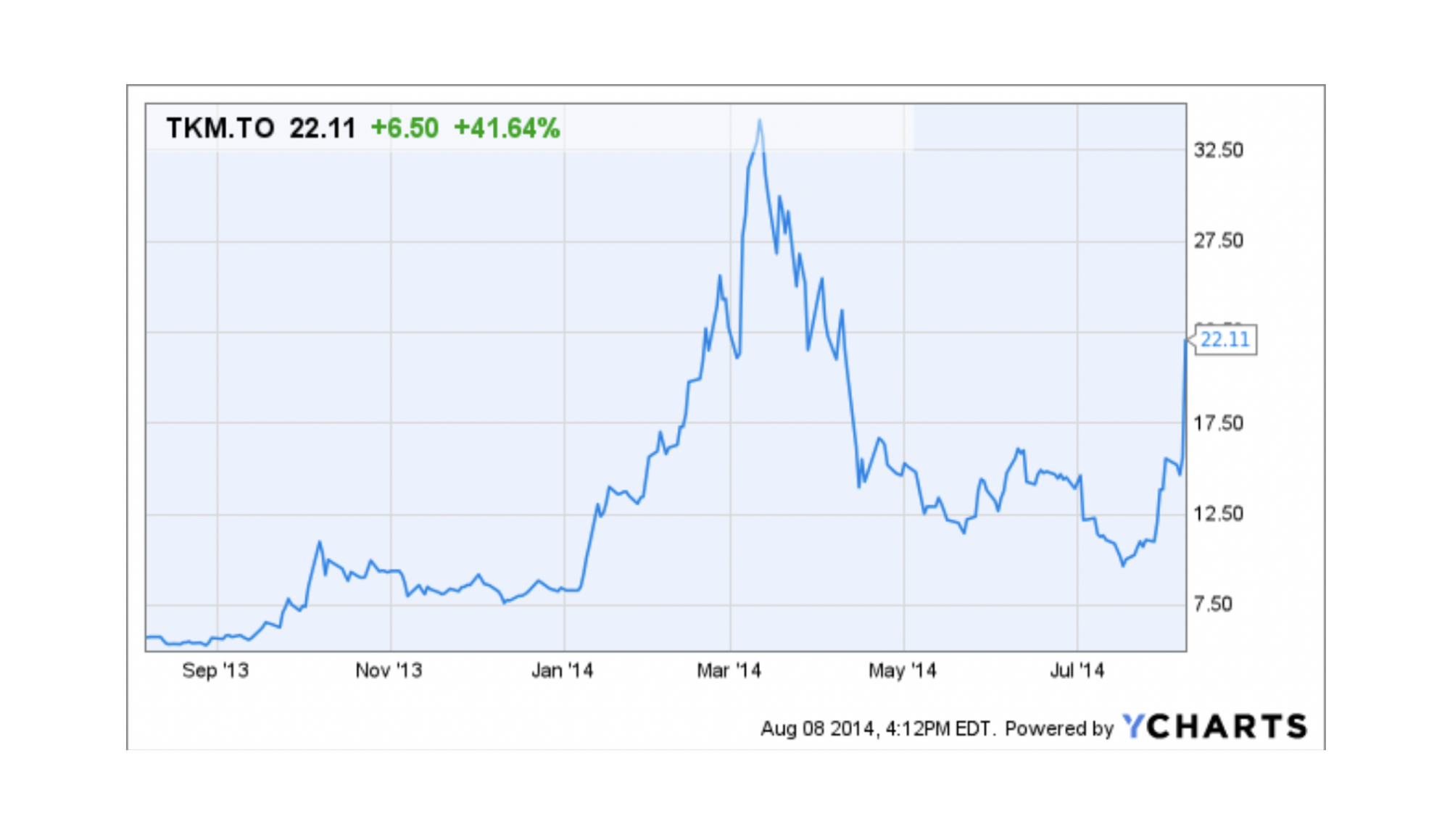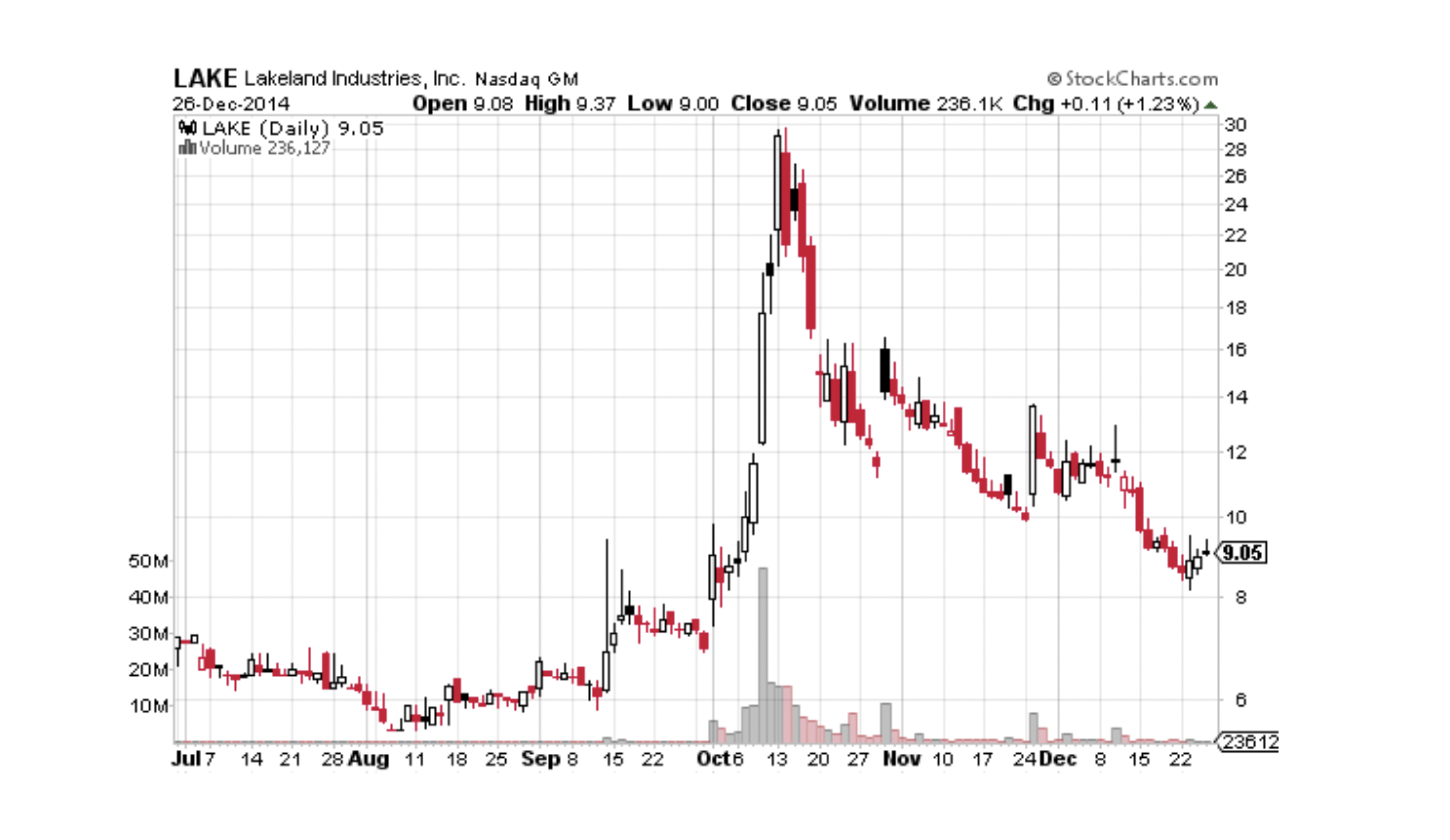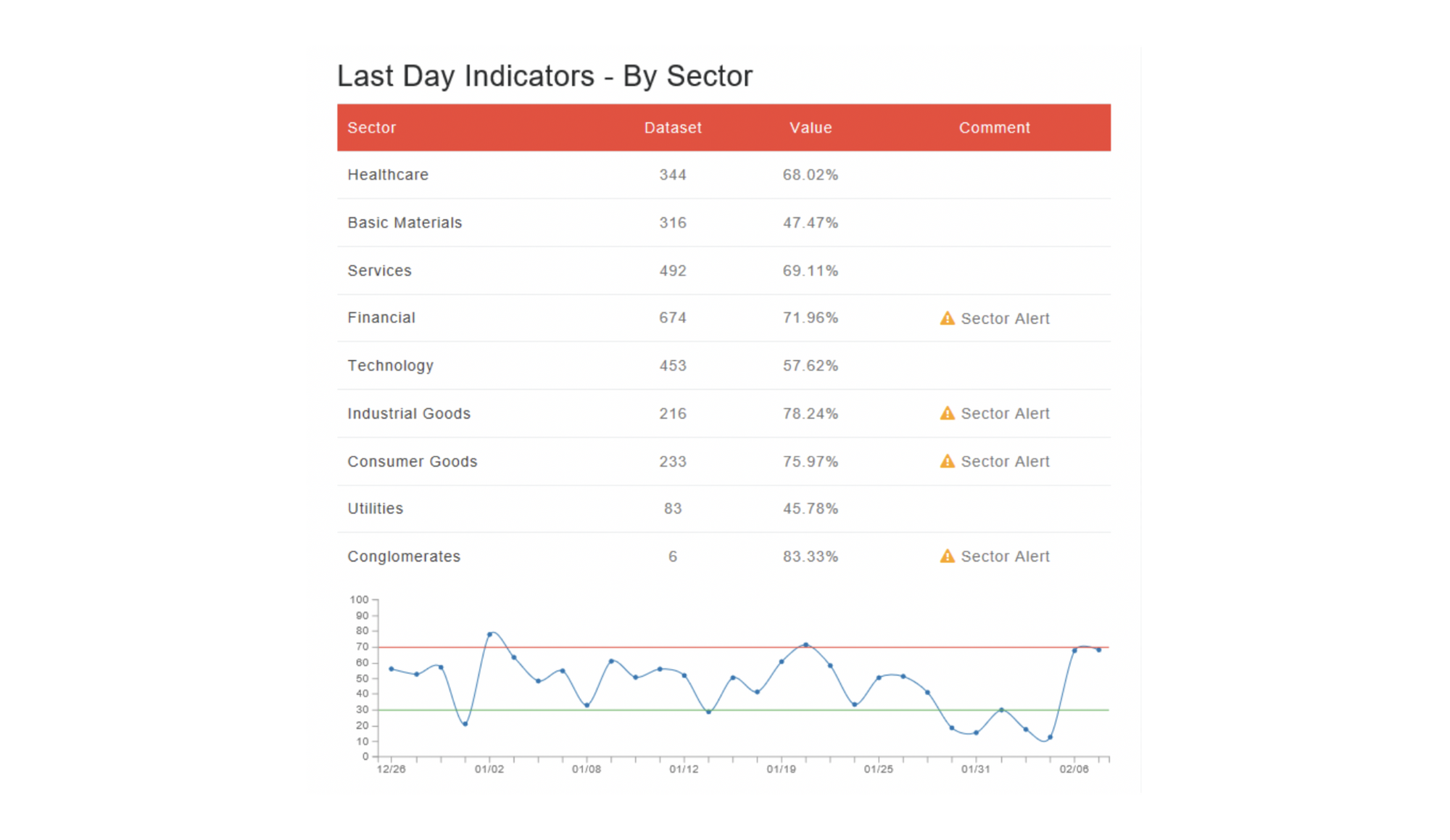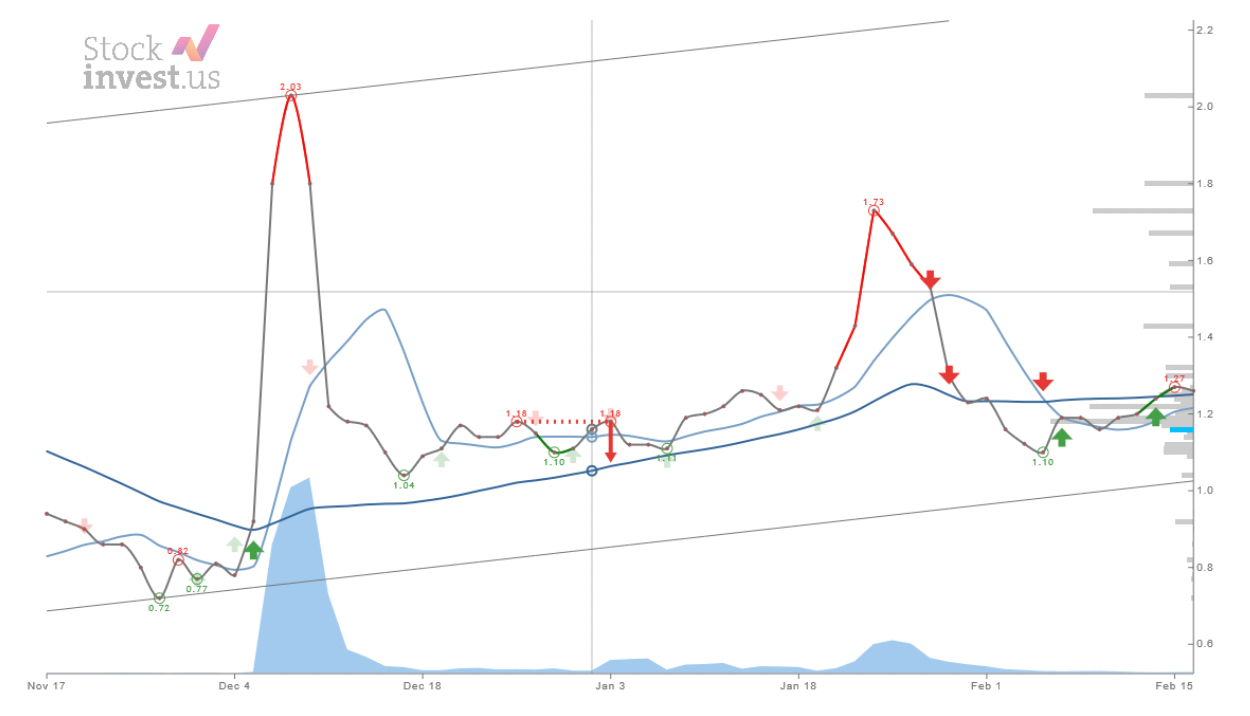Define your strategy - Knowing your fundamentals, part I.
Over the years, I have heard and lived by many different trading rules. The very first mistake I made was falling for this "rule": "A chartist (short for a person using technical analysis when trading) does not care about fundamentals…."
Not knowing fundamentals is one very certain way to lose money. If you (as a short-term trader) don't know that your company will release an "earning report," you will be in for a big big surprise. You may end the trading day with a super profit in stock to see it be blown away on opening next days as earnings have been released after trading hours. If you are using leverage (broker puts up the money for most of the shares), you can be forced to close your position, losing absolutely everything.
Not too long ago (2013-2016), the Ebola virus spread, killing thousands of people in Africa, and several cases were reported in Europe as well. A hunt for a cure was initiated, and billions flowed into the biotech markets. This was given. I put my bet on a few companies and got very lucky on Arbutus Biopharma (ABUS), formerly known as Tekmira Pharmaceuticals Corporation (TKM), doing a 3X in just a few months. After some research, I knew Tekmira was one of the potential companies to release some "breaking news," and so they did.

As the Ebola threat increased, the disaster was all over the news. I saw people being interviewed in Hazmat suits (full protection suits) in one live broadcast. I instantly started to look for manufacturers as I knew there probably would be higher demand than supply pushing prices up (and thereby stock prices). Therefore, my second bet was on Lakeland's US company, yielding another great profit.
It is perhaps a grotesque example of praying on others' misery. But it is a perfect example of why fundamentals matter. As money flowed into the biotech sector, it left other sectors causing otherwise good stocks to fall. The concept of "fixed" liquidity is perhaps the single important knowledge I can teach you. Like every concept, it has modifications and exceptions, but the general usage is very high. And the easiest way to explain the concept is to imagine a bucket of money. From this bucket, all economic activities share the money. If some activity uses more money, it will be less for other activities if interest rates are low, more money flows from banking and into the stock market. The flow of new capital is the only way to sustain growth, and at some point, you reach a level where there is no more money. If the growth stops or even declines, money will flow to more lucrative sources. We can use the same concept for a single stock and understand that at some point, there will be a lack of more investors to push the stock further up. Several indicators measure these relationships like RSI, volume, hausse, etc. We will get to them all.

You have made yourself a small trading strategy and learned that you need to know the fundamentals. Where is the market right now? What company have I invested in? This knowledge will help you understand and interpret your results and work your strategy better. Let us say you invest in the chipmaker AMD who recently (January 31-st, 2018) posted record results for Q4 (fourth quarter). If you read their comments and the results, you would see that some results are due to the huge demand for graphic cards for cryptocurrency mining. What happens if crypto prices collapse? China already banned all crypto, and Russia is considering the same…. Or let us take another example. You invested in Snapchat (SNAP) at $26.50, your stocks are traded at $13.50. Bad luck? Or is the fact that SNAP had an insane valuation on their IPO (initial public offering - when they got listed on Nasdaq) compared to most other companies? If you look at Facebook (FB) and Snapchat (SNAP), you can easily understand why FB is far easier to capitalize. If you look behind the numbers, you will also see that FB keeps growing its user base while SNAP struggles.
With a minimum of fundamental knowledge, you can add elements to strengthen your strategy. This can be elements like:
- I will not sit in stocks that are about to publish economic reports (Q's);
If you're more advanced:
- I will put an automatic stop-loss of 1.5% under the current price (stock will be sold automatically if price hits 1.5%) on the day results are published.
By doing this, you reduce your risk substantially. Furthermore, it forces you to pay more attention to the stock(s) in your portfolio. Like cash is king. Knowledge is too.
Define your strategy - Knowing your fundamentals, part II.
So far, I have tried to make you understand that you need to know some minimum fundamentals like:
- What part of the cycle is the market now (are you investing in a bear or bull market)?
- What is the core business of my stock (know your stock)?
I have mentioned that there is a level of liquidity in the market and that if it flows into one sector, another may lose. In this decade, my two favorite sectors have been technology and biotechnology. I have also followed raw materials as the ever-growing human population and increased living standards are putting their toll on resources. For instance, the salmon farming company Marine Harvest (MHG.OL) has gone from NOK 10 to NOK 163 in just nine years. After some correction, I am sure that fish production will be a good investment for the next few decades.
As a trader, opposite to a long-term investor, you jump in and out of stocks. You seek short-term profit. Where the long-term trader would avoid investing in dying businesses, you as a trader may still be active, but the general advice is to leave it. Staying in trending sectors and industries will save you much risk. Many investors lost money on old video store chains and many that made a fortune on Netflix. Being a big brand is no guarantee for success. Large corporations require large cash flow, and if this dries up, they are in huge problems. A good business may overnight become a nightmare. The last proof of this is the oil industry which took a brutal hit when the oil plunged from $100 (Brent crude) in the summer of 2014 to $35 in the winter of 2016. Why would you fight a falling oil price by investing in oil shares? This is usually a lack of knowledge, and hope is stronger than common sense. To buy shares is easy. Selling is hard.
Earlier I pointed out that the liquidity is just shifting from one thing to another. When banks lower their interest rates, saving banks less attractive, money goes into the stock market and vice versa. If money goes out from one sector in the stock market, it usually flows into another sector. The massive fall in prices of oil took its toll on oil shares, but at the same time, it was a boost for the airline companies that now could lower their running costs. While oil prices were plunging from the summer of 2014 till the beginning of 2016, the Norwegian Air Shuttle company (NAS.OL) went from NOK 180 to NOK 380. As a trader, you need to utilize these fundamental movements. Trading oil-related stocks (except shorting) when oil prices fall would require extreme precision and picking, while you could pick almost any airline company and do very well in the same period.
Depending on the amount of capital you are trading with, you should define your main sectors. A good piece of advice is to make a table and write scores for each sector as you see it. You can use news sources, your gut feeling, or technical tools like hausse indexes found at StockInvest.us. Hausse indexes are one of my personal favorites, and in the short term, it simply measures the relationship between buying and sell signals. Too many buy signals increase risk heavily, while the opposite happens if there are too many sell signals. Hausse indexes can be made from a long range of both fundamental and technical signals. The table below is from Stockinvest.us and was copied the day before a -3% fall in the US markets.

As a trader, you can utilize this information to play your risk. There is no contradiction in having the financial sector in your strategy as one of your main investing areas and reducing your exposure when these indexes are high. I will get into more details about working with high risk in later chapters. I also need to mention that there are hausse indexes for all periods, including intraday.
Bit by bit, I hope you can now see how your strategy is picking the stocks for you by the method of elimination, and also keep in mind that if you follow a strategy, the results derive from the strategy. A wise man once said: How can I change something if I have no clue what I am doing wrong?
Define your strategy - Knowing your fundamentals, part III.
By now, we understand that liquidity flows, and a small but very good proverb comes to mind: "Follow the money". It is one of the oldest and most basic principles; the path of less resistance. It is widely used in marketing and referred to as greed in the Bible. If it is easier and safer to make money by placing them in the bank (high-interest rates), money will flow out of stock markets into the saving accounts. If it is easier to make money in the technology sector than the industry sector, the money will flow from industry to technology sector, and for stocks to rise, they will need a constant supply of new cash.
A contradiction is that stocks with no seemingly fundamental reason, like huge earnings or agreements, make huge gains in short periods. An example of this - stocks like Tesla (TSLA) and Snapchat (SNAP), which operate in deep red, burning investors' money like crazy. There is far less resistance in beliefs than cold hard facts. If enough people believe that a stock is a good buy, it will go up. There is often a huge and professional marketing apparatus pushing news after news to shape the investors' minds. There is no point in fighting such stocks with short selling. Until the day they find their tipping point, you should stick to simple but powerful proverbs like "Follow the flow" or "Let the trend be your friend". The tipping point for stocks like this, where they go from gainers to losers, can often be seen in the news content. In the end, they will be more and more desperate and often not even related to the business itself. This will usually be backed up by the major players who do the famous pump and dump. In a pump and dump, brokers start heavily recommending the stocks, boosting them while major players sell them. In other cases, the brokers fire up the stock, making larger purchases (often when liquidity is lower than usual), and then off-load all stocks while you think the stock is on a roll. Therefore, you should watch the news, insider information, and shareholder structure. The market is two-faced, and the same is with the owners. They often say one thing while doing the opposite. Since the beginning of 2018, Snapchat (SNAP) has been rolling out new changes to its application. These changes have (as of the 15th of February, 2018) gathered more than 1 million signatures from users who wanted to revert it to the old design. However, the CEO, Evan Spiegel, claimed the design is there to stay and will benefit both users and the company (income). Nevertheless, new records show that on the 14th of February, 2018, the same Evan Spiegel sold more than 2.65 million of his shares for a value of more than $50.1 million. Other insiders, like Director Mitchell Lasky been selling 25.000 stocks every single week since November 2017. Why?

In stock trading, it is very much about the future. When you're buying or selling stocks, you're making a prediction. You either predict it will go up or that it will go down and place your bet. Companies with high evaluation either make good yearly profits or believe that they will make it (predicted). The evaluation is often measured by price-to-earnings [P/E], price-to-earnings-growth (PEG), or price-to-book [P/B], which in the short term look at the value of all the company's assets. I would not claim it necessary to know these definitions unless you're doing value trading. There are too many variables included, like the type of industry, the maturity of the business, etc. Neither does the stock market pay daily attention to it, but it will affect it sooner or later. No company can run endlessly in the red. There is only a limited amount of capital and investor's trust. Some of the worst news that can hit you if you're not prepared: when a company is issuing new stocks, this can take 5-20% of your profit or increase your loss in minutes. It is very seldom that companies get more money without offering some rebate. I may be very wrong, but I believe Tesla will be such a company, asking the investors for more and more money to support the dreams and visions of Elon Musk. It may work very well, even be smart, in bullish markets, but it can be devastating if the bear roars.
In your strategy, you should be accountable for the fundamentals. If your focus is the company's financial situation, you will use the methods mentioned above. You can, for instance, have in your strategy that you will not invest in companies that have P/E higher than X. Again, you will see that the number of stocks to select from will be reduced, so your strategy will pick the stocks for you. If everything gets confusing and you like to follow the market, you can use the beta coefficient. Beta is a measure of the volatility or systematic risk, security, or portfolio compared to the market as a whole. You may find this strategy boring in your pursuit for quick wealth, but remember the phrase "easy come, easy go." Even following a Beta-strategy will not make you safe. Let me show you an example:

If you invested in Apricus Biosciences Inc. (APRI), which has a Beta of only 0.26 (low risk), you would have seen a -67.40% loss on Friday, the 16th of February. 2018. The colossal loss came after the company got a rejection to start marketing its topical erectile dysfunction (ED) drug Vitaros from the Food and Drug Administration (FDA). In this case, APRI closed at $3.12 on Thursday and opened at $1.07 on Friday. No stop-loss in the world would have helped you.
It is important to understand that this is an exception and a special case. If you follow a Beta strategy, you will be more right than wrong as long as the market is in an upwards trend. The only way to reduce all risk is simply by not investing in stocks at all. It is also worth mentioning that APRI is a fundamentally and technically high-risk stock (based on daily trading volume). With a defined risk level in your strategy, you would have never bought APRI in the first place.
Define your strategy - Before we move on
As earlier established, you should base your trading on a strategy that takes into account your financial strength (size of a portfolio), your desired level of risk, the segments/sectors you like to trade with, and so on. You will not have to "find" stocks with a good and well-defined strategy. They will be found for you. The 2.800 stocks at NYSE will be reduced to maybe as little as ten stocks fitting your criteria. The next parts will focus more on which of the ten stocks to select, and for this, we will use my favorite tool - technical analysis. But before going there - some last thoughts about fundamentals and strategy.
It is easier to become a good trader if you understand that you will make bad decisions. You will most likely lose money before you make some. The main point is that you have to learn from it. Buying is easy, but selling is hard. No matter what you think, emotions will come to play. Greed and fear are written in stone. If a defined strategy does your picks, at least you know you have to change the strategy. Changing yourself as a person is close to impossible. Why would you select high-risk stocks if you're an impulsive person? Playing high-risk stocks requires true dedication and emotionless decision-making. Even after 20 years of playing the stock market, I still have not managed to transform my personality enough to play the "high ball." My most common mistakes are entering too late, leaving too early in runners, and selling too late in stocks that do not perform or drop. Knowing this, I decided that I would never play more than one high-risk stock at the time, and it should always be less than 20% of my total portfolio.
Information can be found at many sources, but always ask yourself who can benefit from the information/news. An article written by Forbes is no guarantee against false or misleading information. They will write and publish anything that sells. Often news companies are fed with information that has a particular intention. There are "shitpacks" in politics, and the same applies to the stock market. Reports are "bought" from scientists and published. Lobbyist activities in politics are just the same as in the financial world. Why would Elon Musk and SpaceX wait to launch the heavy lifter with a Tesla on board until just before Tesla released the worst quarter (Q4) numbers in the company's history? Coincidence or a brilliant move by Mr. Musk? By continuously pushing all kinds of news, Tesla avoids the deep main questions like what to do when they run out of cash? According to all logic and number crunching, it is not a question of "if" but "when." As an investor and trader, you should ask yourself if you should go all in or portion your risk. The upside in Tesla is huge, but there is no free lunch. Tesla is also one of the most shorted companies globally when this is written.
I have mentioned pump & dump a few times in the text. Pump and dump come in many shapes and colors, but the intent remains the same. Pump up the stock, then dump it. If a stock suddenly starts to get many recommendations without any big fundamental changes ongoing - a bell should start ringing. Some famous broker sees a "possible" potential. Vague articles with many scenarios that give huge profits get published. The figures are just great. Suddenly the volume starts to move, and somebody is buying large quantities. Brokers issue an alert to their smaller clients. XXX is moving, and the potential is very good. The stock starts firing up. 5%, 10%, 20%, up up and up. The smaller day traders jump in to see the air go out and stock to fall back to start or even to red. There is no loyalty. Money talks. As the proverb says: "If something sounds too good to be true, it usually is."
I often see attempts of stock pumping on stock-related forums: users saying that "news" will soon come or rumors on a potential deal. Since large companies often require large volumes to be moved, these attempts are often towards minor companies with low daily trading activity. For many years biotech stocks have had hot "pump" cases. A typical pattern for such stocks is a long period with very little trading - then huge price spikes, where stock afterward goes back to a vegetative state. In most cases, it is "penny stocks."

If you are aware of this type of behavior, you can make a lot of good trades. I often post possible runners on our Twitter account https://twitter.com/StockInvestUS asking the followers to keep an eye on the volume.





